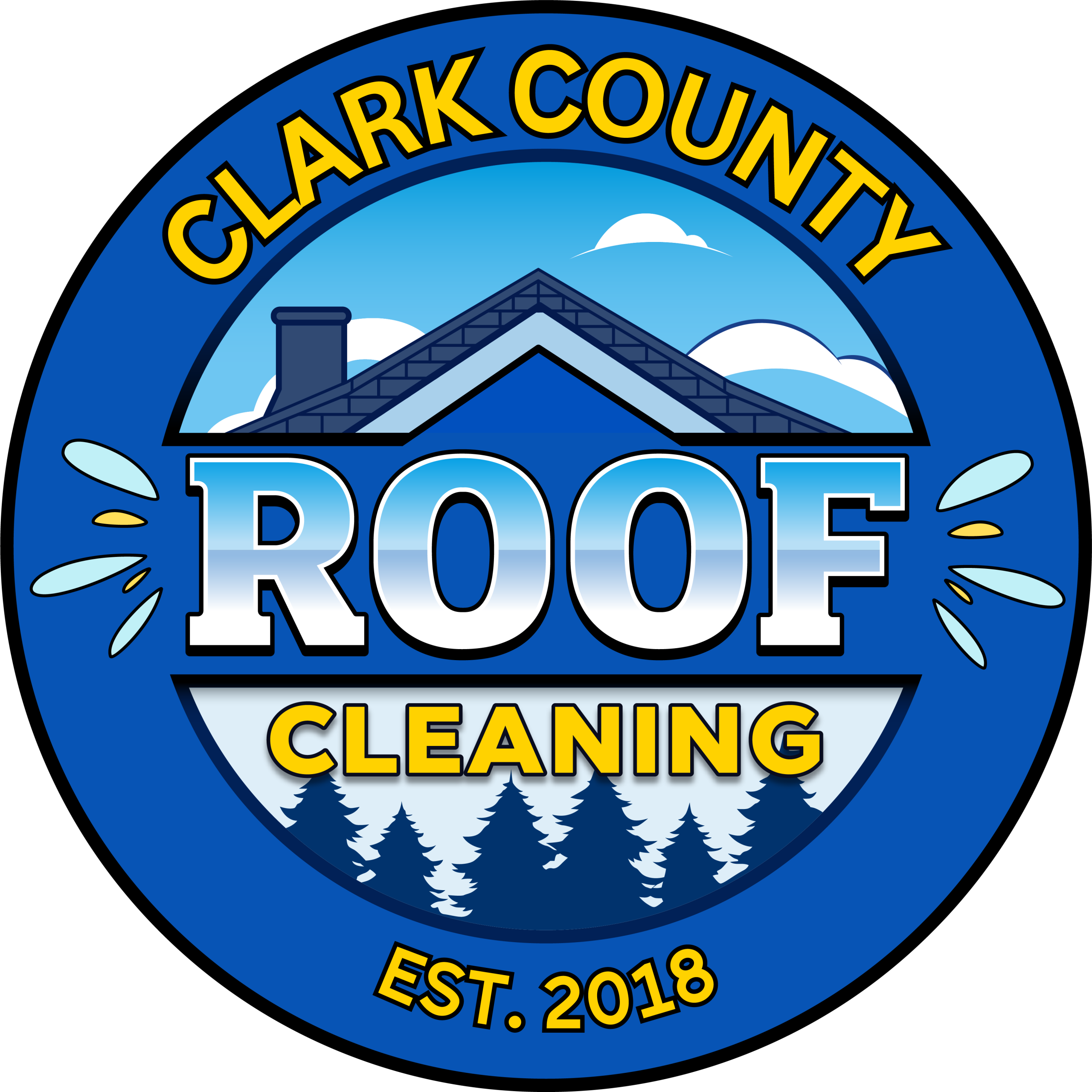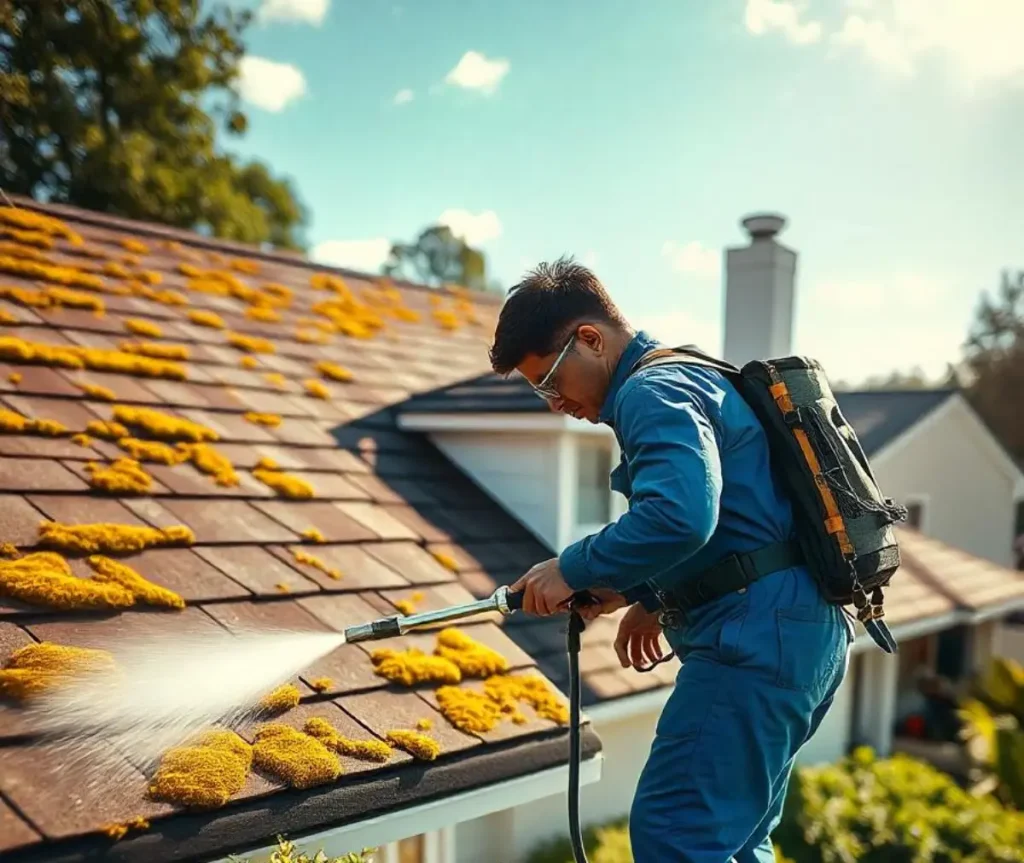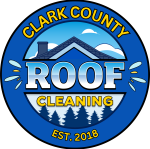A Comprehensive Guide
A clean roof not only enhances your home’s curb appeal but also plays a vital role in maintaining the structural integrity of your property. Yet, when it comes to home maintenance, many homeowners overlook the importance of keeping their roofs free from debris, algae, moss, and other contaminants. A regular cleaning schedule can help you avoid costly repairs and prolong the life of your roof. But how often should you clean your roof, and what factors determine the ideal frequency? In this blog post, we’ll delve into everything you need to know about roof cleaning, the variables that influence cleaning frequency, and best practices for maintaining a healthy, long-lasting roof.
1. Why Roof Cleaning Matters
Your roof is your home’s first line of defense against the elements. Over time, leaves, twigs, dirt, and other debris can accumulate on its surface. In damp or shaded environments, you might also notice the growth of moss, algae, or lichen. These organic materials not only mar the appearance of your home but can also compromise your roof’s functionality. Moss and lichen, for example, retain moisture that can seep into your shingles and underlying materials, accelerating wear and tear.
Algae streaks, commonly seen as dark stains or patches, are more than just an aesthetic concern. While algae themselves may not directly damage most roofing materials, their presence often indicates a roof that has been neglected. Eventually, this can lead to other problems like mold growth and shingle deterioration. Furthermore, trapped moisture can hasten rot, leading to potential leaks. Regular roof cleaning effectively removes these harmful elements before they cause extensive damage, helping you avoid expensive repairs down the road.
2. Factors Influencing Cleaning Frequency
There is no one-size-fits-all answer to how often you should clean your roof. Instead, the ideal cleaning frequency depends on a variety of factors:
- Climate and Weather
Homes in regions with heavy rainfall, high humidity, or frequent storms may require more frequent cleaning. Moist, shaded areas accelerate the growth of moss, algae, and mold, making maintenance more urgent. - Surrounding Vegetation
If your home is surrounded by trees, your roof will likely accumulate more leaves, twigs, and branches. Overhanging limbs can drop debris directly onto your roof, so properties with dense foliage generally need more regular attention. - Type of Roofing Material
Asphalt shingles, metal roofing, slate, and tile each respond differently to environmental factors. While metal roofs are less prone to algae, they can still suffer from accumulated debris. Asphalt shingles tend to be more susceptible to streaking from algae growth. - Roof Slope and Design
The pitch of your roof and its design features—such as dormers, valleys, or skylights—can influence how debris collects. Flat or low-slope roofs often accumulate more debris, requiring more frequent cleaning to prevent pooling water and blockages. - Local Environmental Conditions
If you live near factories or areas with heavy air pollution, contaminants may settle on your roof and accelerate the deterioration process. Similarly, salty coastal air can contribute to corrosion on metal roofs. - Previous Maintenance and Repairs
A roof that has gone years without a thorough cleaning may need extra care and more frequent follow-ups. Timely minor repairs can prevent more significant issues—like leaks and structural damage—helping you extend the intervals between cleanings.
3. General Guidelines for Cleaning Frequency
With all of these variables at play, determining exactly how often you should clean your roof can be challenging. However, a few general guidelines can help you create a schedule:
- Annual or Biennial Cleaning
Many experts recommend cleaning your roof at least once every two years. In moderate climates without excessive tree coverage, a thorough roof cleaning every 18 to 24 months can help prevent the buildup of dirt, moss, and algae. - Seasonal Checks
Even if you only clean your roof once a year or every other year, it’s wise to conduct periodic visual inspections—especially after major storms or during the fall when leaves are plentiful. If you notice significant debris, discoloration, or moss growth, you may want to schedule a cleaning sooner rather than later. - High-Debris Areas
If your home is located in a heavily wooded area or experiences storms that drop branches and leaves onto your roof, consider cleaning at least once a year. Removing debris promptly reduces the risk of moisture retention and structural damage. - Moisture-Prone Regions
For homes in high-humidity climates, an annual cleaning is often advisable. Keeping moss and algae at bay is crucial, as these organisms thrive in damp conditions.
Remember that your roof may need more frequent cleanings than these general guidelines if you notice visible signs of buildup. Spot moss growth, excessive leaves, or dark streaks are all red flags that your roof may need attention sooner rather than later.
4. Potential Consequences of Neglect
Failing to clean your roof at appropriate intervals can have several negative outcomes:
- Structural Damage
Trapped moisture under shingles can compromise the integrity of your roof deck, leading to rot and, ultimately, leaks. Over time, water damage can even affect the structural framing of your home. - Reduced Lifespan
Moss and lichen growth on a roof can lead to curling, cracking, or loosening of shingles. This premature wear means you might have to replace your roof sooner than expected. - Health Risks
Algae and mold spores can find their way into your home’s ventilation system, potentially causing or exacerbating respiratory issues for occupants. - Aesthetics and Curb Appeal
The visual impact of a dirty, moss-covered roof can detract from your home’s exterior. For those who may consider selling, a poorly maintained roof can be a deal-breaker for potential buyers. - Warranty Issues
Some roofing manufacturers include clauses in their warranties that require regular maintenance. Neglecting roof cleaning could potentially void certain product warranties, leaving you on the hook for all repair or replacement costs.
5. Best Practices for Roof Cleaning
Roof cleaning is not a task to be taken lightly. Done incorrectly, it can damage shingles or lead to accidents. Here are some best practices:
- Safety First
Always prioritize safety by using a sturdy ladder, wearing non-slip shoes, and using a harness or guardrails if necessary. If you’re uncomfortable with heights or the condition of your roof, consider hiring professionals. - Gentle Cleansing Methods
High-pressure power washing can loosen or strip granules from your shingles, reducing their lifespan. Instead, opt for soft washing techniques that involve low-pressure water application and specially formulated cleaning solutions to loosen moss, algae, and dirt. - Use the Right Cleaning Products
Choose detergents or commercial roof-cleaning solutions specifically formulated for your type of roofing material. Harsh chemicals like bleach can be effective in killing algae and moss, but they must be used with care to prevent damage to landscaping or siding. - Protect Surrounding Areas
Before applying any chemicals, cover shrubs, flowers, or grass around the perimeter of your home. Rinse them thoroughly with water before and after cleaning to dilute any runoff from the roof. - Address Gutters and Downspouts
When cleaning the roof, it’s a good idea to clear out your gutters and downspouts as well. Debris buildup in gutters can lead to improper drainage, contributing to water damage and algae growth along roof edges. - Time Your Cleaning
If possible, choose a day when the weather is mild and there’s no forecast of heavy rain. Heavy rainfall can wash away cleaning agents before they’ve had a chance to work, while extremely hot days can cause cleaning solutions to dry too quickly.
6. Hiring Professional Roof Cleaners
For many homeowners, hiring a professional roof cleaner is the safest and most efficient way to ensure a thorough job. Professionals have the experience and equipment needed to clean roofs without causing damage. Plus, they can spot early signs of potential issues, such as loose shingles or compromised flashing, and recommend fixes before these problems escalate.
If you decide to hire a professional, be sure to do your research. Ask about:
- Experience and References: How long have they been in business, and do they have testimonials or references from satisfied clients?
- Insurance: Confirm they carry the appropriate liability and workers’ compensation insurance.
- Cleaning Methods: Inquire about the products they use and their approach—avoid companies that rely exclusively on high-pressure washing.
- Warranty/Guarantee: Some companies offer a short-term guarantee against regrowth of algae or moss. This can be a valuable perk if you live in a high-moisture area.
7. Preventative Measures Between Cleanings
While scheduling regular cleanings is key, there are steps you can take to keep your roof looking and functioning optimally between professional visits:
- Trim Overhanging Branches
Regularly prune or trim tree branches that extend over your roof. This helps reduce leaf litter, twigs, and other debris that can accumulate on the shingles. - Install Gutter Guards
These devices help prevent debris from clogging your gutters. A clear drainage system allows water to flow freely, reducing the risk of moisture-related roof damage. - Ensure Adequate Ventilation
Proper attic ventilation keeps your roof cooler and helps prevent moisture buildup. Excess heat and humidity in the attic can accelerate the growth of algae or mold and cause shingles to deteriorate faster. - Routine Inspections
Make it a habit to visually inspect your roof from the ground or by climbing a ladder to gutter level—especially after storms. Look for loose shingles, debris accumulation, or signs of moss. - Address Minor Issues Promptly
A small crack or loose shingle can escalate into a bigger problem if left unchecked. Quick fixes can save you from costly repairs, as well as reduce the intervals at which you need to perform deep cleanings.
8. Seasonal Considerations
Spring
- Spring showers can lead to moss and algae growth. A post-winter inspection can reveal any damage from snow or ice. If you notice discoloration or buildup, it may be a good time for a cleaning.
Summer
- Many homeowners find summer the most convenient time for roof maintenance because the weather is typically dryer. However, watch out for extreme heat, which can make manual labor on the roof unsafe or uncomfortable.
Autumn
- Falling leaves can blanket your roof and gutters. Clearing this debris promptly is crucial. If the build-up is significant, you might consider a professional cleaning before winter sets in.
Winter
- In colder climates, snow and ice can damage shingles and promote algae growth if the roof remains damp. While winter cleaning is challenging, periodic checks for ice dams or damage are advisable.
9. How to Tell Your Roof Needs Cleaning
Even if you have a cleaning schedule in place, it’s wise to recognize warning signs that your roof might need attention sooner than planned:
- Visible Moss or Algae
Any green patches, fuzzy growth, or dark streaks indicate algae or moss. These organisms will only grow more aggressive over time and should be cleaned off. - Excess Debris
Leaves, branches, or pine needles piling up in valleys or near chimneys and vents can trap moisture. When you notice these accumulating, schedule a cleanup. - Clogged Gutters
If water spills over the sides of your gutters during a rainstorm, they may be clogged with debris. This overflow can back up onto your roof, promoting rot. - Water Stains on Your Ceiling
Signs of leaks inside your home—like water stains or sagging sections—suggest that your roof may have compromised areas, sometimes caused or worsened by excessive debris and moisture. - Curled or Damaged Shingles
While not always related to cleanliness, curled or damaged shingles can indicate that moss and algae have made their way underneath, or that moisture is trapped, speeding deterioration.
10. Conclusion
Roof cleaning is an essential yet often overlooked aspect of home maintenance. How often you should clean your roof varies widely based on climate, surrounding vegetation, roofing materials, and local environmental conditions. However, most homeowners benefit from scheduling a thorough cleaning at least once every one to two years, accompanied by regular inspections and prompt attention to any warning signs. By keeping a close eye on your roof’s condition, addressing minor issues quickly, and following best practices for cleaning—whether you do it yourself or hire a professional—you can extend the life of your roof and protect your biggest investment: your home.
A clean, well-maintained roof not only enhances the appearance of your property but also ensures that you and your family stay safe and dry. By knowing the factors that influence cleaning frequency, paying attention to seasonal changes, and maintaining a routine, you’ll be better equipped to keep your roof in top condition. Over time, these preventative efforts can save you considerable time and money, providing peace of mind and preserving your home’s value.


